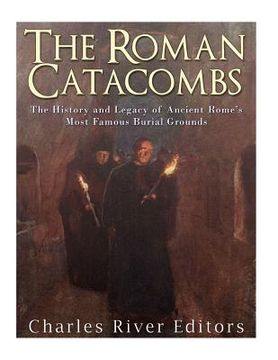The Roman Catacombs: The History and Legacy of Ancient Rome's Most Famous Burial Grounds (en Inglés)
Reseña del libro "The Roman Catacombs: The History and Legacy of Ancient Rome's Most Famous Burial Grounds (en Inglés)"
*Includes pictures *Includes online resources and a bibliography for further reading An inexplicable draft of wind dances across the dirt floors of the narrow passageway, which seems to stretch on with no end. The flickering flames of the torches mounted onto the rough, sandpaper-like walls of stone create eerie shadows on the dirt floors. One can hear the disembodied whispers intermingling with the chill of the musty air, prompting the hair on many people's arms to raise. Logically speaking, this is nothing more than the trick of the mind, but the whispers unquestionably feel tangible and real, especially considering the visitor is in the company of thousands upon thousands of corpses stacked onto the walls from floor to ceiling. This kind of imagery is often what springs to mind at the mention of the Roman catacombs, but there was so much more to these underground cemeteries. As Roman law forbade its citizens from burying their dead within the city walls, the roads of the Appian Way became dotted with, and later completely flanked by tombs of all sizes. Those from the upper echelons of society constructed extravagant tombs and magnificent mausoleums for their families and future descendants. There were tombs and sepulchers of every sort, from tumulus constellations, which were round mounds that rose from the ground, to boxy temples, and clusters of miniature pyramids. Next to every tomb was a milestone marker with the distance to the nearest town engraved on the stone slab. Some of these tombs - or what is left of them - continue to stand in their original sites today. One of the more renowned tombs was that of noblewoman Cecilia Metella, whose mausoleum was later converted to a fortress that featured an enormous cylindrical tower with double-winged crenellations. Another was the resting place of the Rabirii family, which is located close to the 5th Roman mile of the Appian Way. What remains of this once-handsome memorial is a monument with the faded busts of the Rabirii patriarchs and the goddess, Isis. Since the bulk of the first Christians were slaves and those from the bottom tiers of society, only a handful could spare the price of these grandiose burial places. This was precisely what led the first Christians to take spade to hand and drive it into the earth, creating the first Christian catacombs of Rome. The first Christian catacombs, which began as primitive, single-leveled chambers, were modeled after the Jewish catacombs of Rome. The Jewish catacombs, which had existed for at least a full century before the Christian counterparts, were the first to be built on Roman soil, but theirs was an idea that was far from original. Historians are now positive that the world's first catacombs originated in the Middle East some 6,000 years ago. There, the bones of the dead were placed neatly into chests called "ossuaries" during the second burial, and stored within their settlements. With urbanization, these ossuaries were transferred to natural or man-made underground caves, which could be entered through a narrow, vertical passageway. The Roman Catacombs: The History and Legacy of Ancient Rome's Most Famous Burial Grounds journeys through the origins of these necropolises, their development throughout the years, and the period of rediscovery that put these subterranean cemeteries on the map. Along with pictures depicting important people, places, and events, you will learn about the Roman catacombs like never before.

